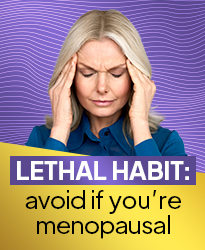fad diets—a tantalizing buffet of empty promises and kale smoothies. One week, carbs are the devil; the next, they’re your long-lost soulmate. It’s like dating in the food world, and let’s face it—these diets are the serial heartbreakers of nutrition. But fear not! Today, we’re swiping left on the quick fixes and diving into the delicious (and lasting) journey of building a healthy relationship with food.
Fad Diets: The One-Night Stands of Nutrition
First, let’s call out these fickle flings for what they are: unsustainable, overly restrictive, and often downright bizarre. The cabbage soup diet? A fart symphony waiting to happen. The grapefruit diet? Citrus-flavored misery. And don’t even get me started on anything that involves “detox teas”—aka laxatives in disguise.
The problem with fad diets is that they promise the world: a slimmer waist, glowing skin, and the ability to finally fit into those jeans from high school (why are we still holding on to those, by the way?). But they rarely deliver. Why? Because real change doesn’t come from drinking cayenne-spiked lemon water for a week.
Step 1: Unfollow the Diet Gurus
The first step to breaking free? Unfollow those Instagram influencers who swear by the all-avocado lifestyle or swear off solid foods altogether. Let’s be honest: the only six-pack they’ve got comes from an airbrushed filter.
Instead, follow people who advocate balance, sustainability, and actual science. (Hint: Look for registered dietitians, not Becky-with-the-blender.) Building a healthy relationship with food starts with tuning out the noise and focusing on what works for you—not what worked for someone else’s Photoshop session.
Step 2: Ditch the Guilt—Not the Dessert
Ever had a brownie and then spent the rest of the day berating yourself? Welcome to diet culture’s greatest scam. Here’s the truth: food isn’t moral. A slice of pizza isn’t bad, and a kale salad isn’t good. They’re just food—delicious, life-sustaining food.
Guilt has no place at the dinner table. Instead, practice mindful eating. Savor that brownie without mentally calculating how many burpees it’ll take to “burn it off.” (Spoiler alert: burpees are never worth it.)
Join Our Mailing List
Register now to get our hints and tips newsletter directly to your inbox
Step 3: Learn to Listen to Your Body
Your body is smarter than any fad diet. It knows when it’s hungry, and it knows when it’s full. The problem? Years of dieting have taught us to ignore these signals in favor of calorie counting or eating by the clock.
It’s time to reintroduce yourself to your hunger cues. Are you truly hungry, or just bored? Does your body want a hearty bowl of soup or an entire bag of chips? (Sometimes, the answer is both—and that’s okay.)
Step 4: Balance, Not Extremes
Let’s address the elephant in the fridge: balance. It’s not sexy. No one’s writing bestselling books about eating a variety of whole foods in moderation. But balance is the secret sauce of a healthy diet.
Think of your meals as a symphony, with proteins, carbs, and fats working together in harmony. Add a colorful array of fruits and vegetables, and you’ve got yourself a Michelin-starred performance.
This doesn’t mean you can’t have fun. A cheeseburger is not the enemy—it’s an occasional indulgence that keeps life delicious. The key is to enjoy it without falling into the “all or nothing” trap.
Step 5: Cook Like You Care
Let’s face it: when you cook your own meals, you’re less likely to eat an entire pint of ice cream for dinner (though no judgment if you do—we’ve all been there). Cooking gives you control over what goes into your food and helps you reconnect with the joy of eating.
Start small. No one’s expecting you to become a gourmet chef overnight. Even mastering a simple stir-fry or a one-pot pasta can transform your meals—and your relationship with food. Plus, there’s something deeply satisfying about wielding a knife like you’re on MasterChef.
Step 6: Don’t Fear the Carbs (or the Fat)
Carbs are not your enemy. Neither is fat. The real enemy? The diet industry convincing us otherwise.
Your body needs carbs for energy. It needs fat for brain function and hormone production. Demonizing entire food groups only leads to restriction, bingeing, and a pantry full of regrets. Instead, focus on the quality of your carbs and fats. Whole grains, sweet potatoes, avocado, and nuts are your new best friends.
Step 7: Redefine Success
For years, the success of a diet was measured by one thing: the number on the scale. But a healthy relationship with food requires redefining success.
How about measuring success by how much energy you have? How well you sleep? How much you enjoy your meals? Food isn’t just fuel; it’s culture, connection, and comfort.
Step 8: Treat Yo’ Self
Last but not least, give yourself permission to indulge. Life’s too short to skip the birthday cake or pass up the buttery croissant. Treats are part of a balanced diet—just don’t let them become the diet.
When you stop labeling foods as “good” or “bad,” you remove the power they have over you. Suddenly, a cookie is just a cookie—not a gateway to diet disaster.
Breaking Up Is Hard to Do
Breaking free from fad diets isn’t easy. It requires unlearning years of diet culture and embracing a new way of thinking about food. But the payoff? A healthier, happier you who can enjoy a meal without spiraling into a guilt-ridden mess.
So, here’s to breaking up with fad diets and finding real, lasting love—in the form of avocado toast, Sunday roasts, and the occasional midnight snack. Because life is too delicious to spend it counting calories.




